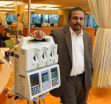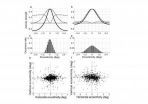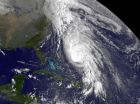(Press-News.org) Hailed by some as the "end of race as we know it" and the beginning of a "post-racial" America, the 2008 election of Barack Obama sparked a measurable bump in feelings of political empowerment among black Americans.
But those sentiments have faded considerably over the last year or so, according to a new analysis of political survey data, with the sharpest declines in perceived political power coming among blacks who identify themselves as conservatives or "born again" Christians.
"The election of a black American to the U.S. presidency did seem to empower African Americans, causing an increase in levels of perceived freedom," writes James L. Gibson, PhD, the Sidney W. Souers Professor of Government and professor of African and African-American studies at Washington University in St. Louis.
"But that increase seems to have been epiphenomenal, with perceived levels of freedom after 2009 soon reverting to their prior level. The boost in empowerment that earlier research has documented may be of little long-term consequence. Instead, ideology and religiosity are now fairly strongly connected to perceptions of freedom among black Americans."
Gibson's findings, based on national surveys conducted between 2005-2011, suggests many black Americans still feel less free than whites when it come to engaging in political activities, including such icons of American democracy as the right to assemble and speak out on sensitive political issues.
His analysis, titled "Being Free in Obama's America: Racial Differences in Perceptions of Constraints on Political Action," is published in a forthcoming special issue of Daedalus, the journal of the American Academy of Arts & Sciences.
"For many Americans, perceived freedom to act seems to be a necessary condition for political participation," Gibson says. "Black Americans are much less likely than whites to perceive that their government will allow them to engage in ordinary (but non-voting) forms of political participation."
While some pundits characterize the black electorate as a monolithic voting block ready to back Obama no matter what, Gibson's analysis reveals a black America fractured by surprisingly diverse political viewpoints.
Key findings include:
Electing an African American to the presidency raised black perceptions of political freedom, but only for a fairly short period. By 2011, perceptions of freedom among blacks were at the same level as in 2005.
Black Americans still perceive much greater constraints on their political freedom than do white Americans, especially in situations where political actions could be perceived as questioning government authority.
67.7 percent of whites assert that the government would allow them to make a speech in public, whereas only 45.7 percent of African Americans hold this view.
14.8 percent of whites assert that hardly anyone feels free to speak their mind; 22.1 percent of blacks hold this view.
Perceptions of freedom among Christian fundamentalists (irrespective of race) are among the most constrained in contemporary American politics.
Black perceptions of political freedom have decreased significantly among fundamentalist blacks, especially those who consider themselves to be "born again."
Conservative blacks and liberal blacks perceived equivalent levels of freedom prior to the election, but after, conservative blacks felt markedly less free than liberal blacks.
Blacks are equally divided, with half who perceive constraints on their freedom and half who do not.
By far, the most powerful predictor of levels of perceived freedom is education: Poorly educated black Americans do not believe that they have the freedom to participate fully in politics.
"Given the objective reality of participation wars in contemporary American politics, it is hardly surprising that some would perceive serious constraints on the freedom available to them, and that even the election of a co-ethnic to America's highest office would have little long-term ability to inoculate against those constraints," Gibson concludes.
INFORMATION:
A complete list of WUSTL election experts is available at news.wustl.edu/news/Pages/24319.aspx.
WUSTL also has free VYVX/ISDN lines available for media use.
END
BUFFALO, N.Y. -- A study by the University at Buffalo shows for the first time that obese males ages 14 to 20 have up to 50 percent less total testosterone than do normal males of the same age, significantly increasing their potential to be impotent and infertile as adults.
The paper was published online as an accepted article in Clinical Endocrinology.
The authors are the same researchers in the University at Buffalo's School of Medicine and Biomedical Sciences who first reported in 2004 the presence of low testosterone levels, known as hypogonadism, in obese, type ...
AUGUSTA, Ga. – A common birth control device is effective in treating early-stage endometrial cancer in morbidly obese and high-risk surgery patients, said Georgia Health Sciences University Cancer Center researchers, and could lead to a cost-effective treatment for all women with this cancer type.
Endometrial cancer, which starts in the lining of the uterus, is the third most common gynecologic cancer, striking more than 47,000 American women every year, particularly the obese. "Total hysterectomy, sometimes with removal of lymph nodes, is the most common treatment ...
Amsterdam, NL, October 16, 2012 – Little is known about oculomotor function in amblyopia, or "lazy eye," despite the special role of eye movements in vision. A group of scientists has discovered that abnormal visual processing and circuitry in the brain have an impact on fixational saccades (FSs), involuntary eye movements that occur during fixation and are important for the maintenance of vision. The results, which raise the question of whether the alterations in FS are the cause or the effect of amblyopia and have implications for amblyopia treatment, are available ...
PULLMAN, Wash.— Washington State University researchers have found that viruses will join forces to overcome a plant's defenses and cause more severe infections.
"These findings have important implications in our ability to control these viruses", says Hanu Pappu, Sam Smith Distinguished Professor of Plant Virology and chair of WSU's Department of Plant Pathology. "Mixed infections are quite common in the field and now we know that viruses in these mixed infections are helping each other at the genetic level to overcome host defenses and possibly lead to the generation ...
Though not often considered beyond the plasma television, small-scale microplasmas have great utility in a wide variety of applications. Recently, new developments have begun to capitalize on how these microplasmas interact with liquids in applications ranging from killing bacteria for sterilizing a surface to rapidly synthesizing nanoparticles.
An interdisciplinary collaboration between researchers at Case Western Reserve University and the University of Notre Dame has revealed a critical interaction that is occurring at this plasma-liquid interface in that the electrons ...
No matter which way you look at it, rejection hurts. Experiencing rejection from a boss, a friend, or a partner is difficult enough for many adults to handle. But adolescents, who are dealing with the one-two punch of biological and social change, may be the most vulnerable to its negative effects.
In a new study published in Clinical Psychological Science, a journal of the Association for Psychological Science, researcher Michael Murphy and colleagues examine the human immune response as a potential link between social stressors like rejection and later mental and physical ...
Cambridge, Mass. - October 16, 2012 - Atmospheric chemists at the Harvard School of Engineering and Applied Sciences (SEAS) have found that when it comes to secondary organic material in the atmosphere, there are two distinct breeds: liquids and jellies.
Secondary organic materials (SOM) are airborne particles that have begun to react with gases in the atmosphere. In the last 20 years' research and climate modeling, these SOM particles have been assumed to drift as liquids. In a liquid phase, the organic materials would absorb other compounds like ammonia or ozone very ...
The song "How do you solve a problem like Maria?" from the famous film "The Sound of Music" comes to mind when looking at NASA satellite imagery of Tropical Storm Maria churning in the western North Pacific Ocean. The answer lies in increased wind shear and cool ocean temperatures – two factors that can weaken the storm, but won't be present over the next day or two.
NASA's Aqua satellite passed over Tropical Storm Maria on Oct. 16 at 0355 UTC, 12:55 p.m. local time Tokyo/Japan (Oct. 15 at 11:55 p.m. EDT) and the Moderate Resolution Imaging Spectroradiometer (MODIS) instrument ...
NASA's Aqua satellite captured a stunning image of Hurricane Paul in the eastern Pacific Ocean that revealed Mexico's Socorro Island was just outside of Paul's eye. Now, Paul is expected to track along the Baja California coast, triggering more warnings.
Hurricane Paul is stirring up rough seas in the eastern Pacific Ocean and warnings are posted along Baja California.
A hurricane warning is in effect for the west coast of Baja California from Santa Fe northward to Punta Abreojos. A tropical storm warning is in effect for the west coast of Baja California north of Punta ...
Hurricane Rafael is a large hurricane and Bermuda has battened down for Rafael's battering today, Oct. 16. NOAA's GOES-14 satellite revealed Rafael's large span that covers several hundred miles and dwarfs Bermuda.
NOAA's GOES-14 satellite captured a visible image of Tropical Storm Rafael in the Atlantic on Oct. 16 at 7:45 a.m. EDT. The image shows the extent of Hurricane Rafael, which is over 410 miles in diameter. That's longer than the distance between Boston and Washington, D.C. The visible image also showed a thick row of clouds northwest of Rafael. Those clouds ...






